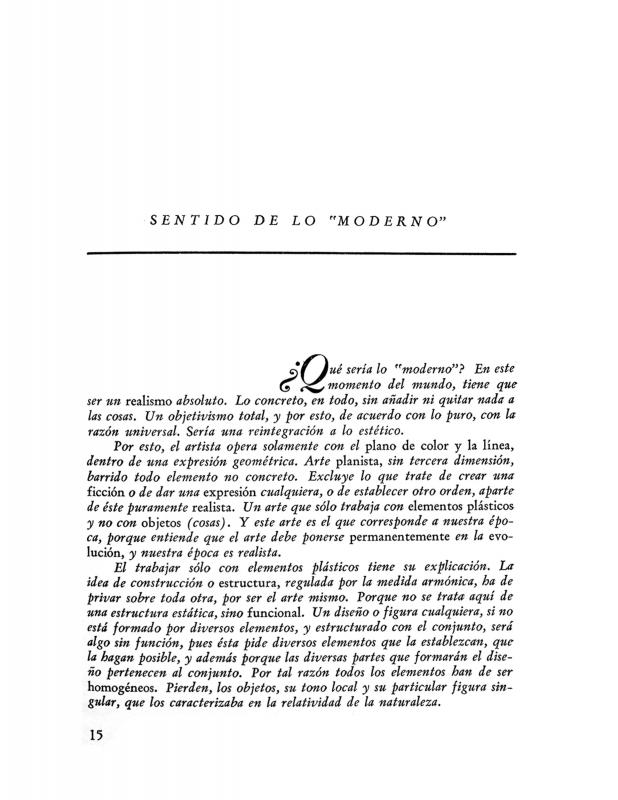Once back in Montevideo, Joaquín Torres-García (1874–1949) was dismissive of figurative art based on imitation, and of Renaissance-style painting. He stated that both abstract art and geometric art are the result of an evolutionary process that leads to an order established by reason. In his view, the structure of an object associates its parts to the whole, thus creating a unity within the work itself that suggests a metonymy of the One, of the universal unity of the whole. Specifically, abstract-geometric art represents a higher state of development from which the artist can create art that is intrinsically part of the harmonious whole of the universe. According to Torres-García, the originality of the new style of modern art does not rely on its “novelty” but on its relationship to the Origin, its agreement with the Rule and with a metaphysical expression of an atemporal language within the “modern” nature of the work.
This text restates ideas that Torres-García had already expressed in other articles and lectures, but here he stresses the relationship between “naturalism in art” and materialism in philosophy. In so doing, he posits that eschewing the former means adopting the philosophical guidelines of the idealist tradition (including Abstract Reason), which he considers to be the antithesis of the intrinsic “instrumental reason” of contemporary materialism. In this article, written in 1937, Torres-García is already advocating a return to ancient traditions of knowledge that, in the Americas, meant re-embracing certain sources of pre-Hispanic cosmology. Ever since then, this became the basis of his theory of “indigenous art” expressed as part of universal tradition, an idea that he would present in his 1939 publication “Metafísica de la Prehistoria Indoamericana” [Metaphysics of Indo-American Prehistory].
[As complementary reading, see the ICAA digital archive for the following articles written by Joaquín Torres-García : “Con respecto a una futura creación literaria” (doc. no. 730292); Lección 132. El hombre americano y el arte de América” (doc. no. 832022); “Mi opinión sobre la exposición de artistas norteamericanos: contribución” (doc. no. 833512); “Nuestro problema de arte en América: lección VI del ciclo de conferencias dictado en la Facultad de Humanidades y Ciencias de Montevideo” (doc. no. 731106); “Introducción [en] Universalismo Constructivo” (doc. no. 1242032); “Sentido de lo moderno [en Universalismo Constructivo]” (doc. no. 1242015); “Bases y fundamentos del arte constructivo” (doc. no. 1242058); and “Manifiesto 2, Constructivo 100%” (doc. no. 1250878)].








